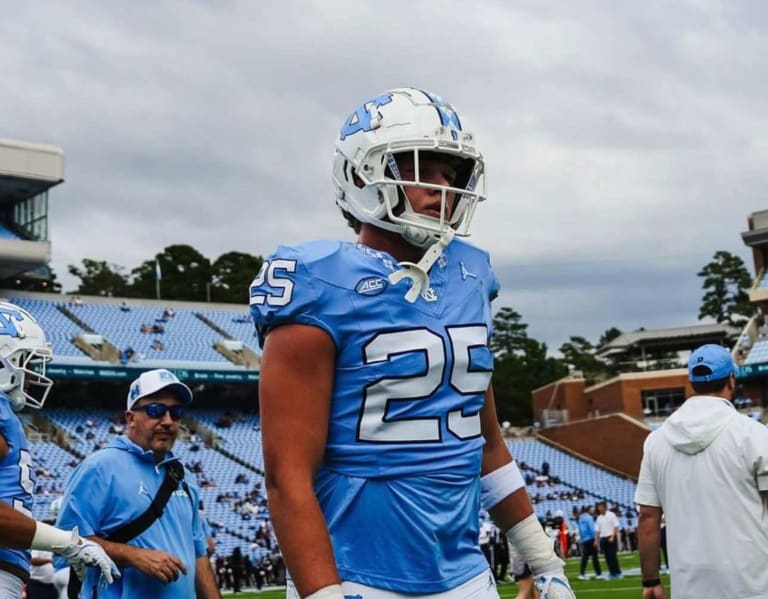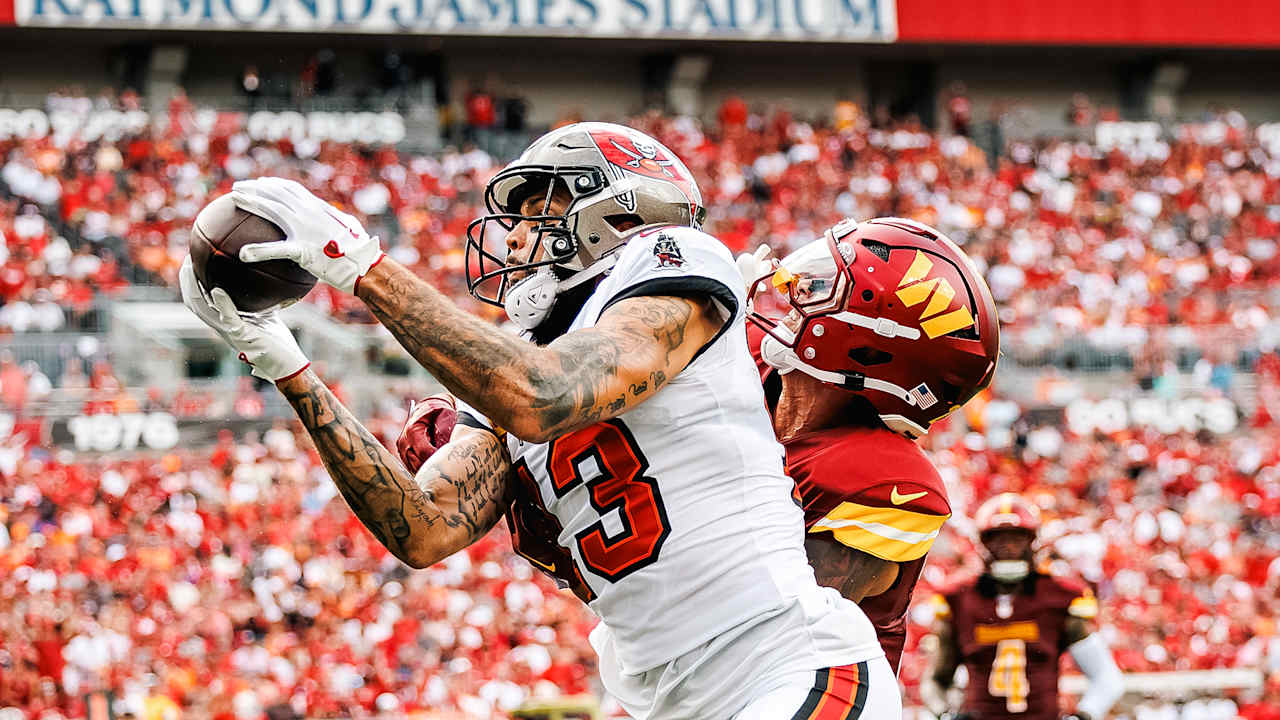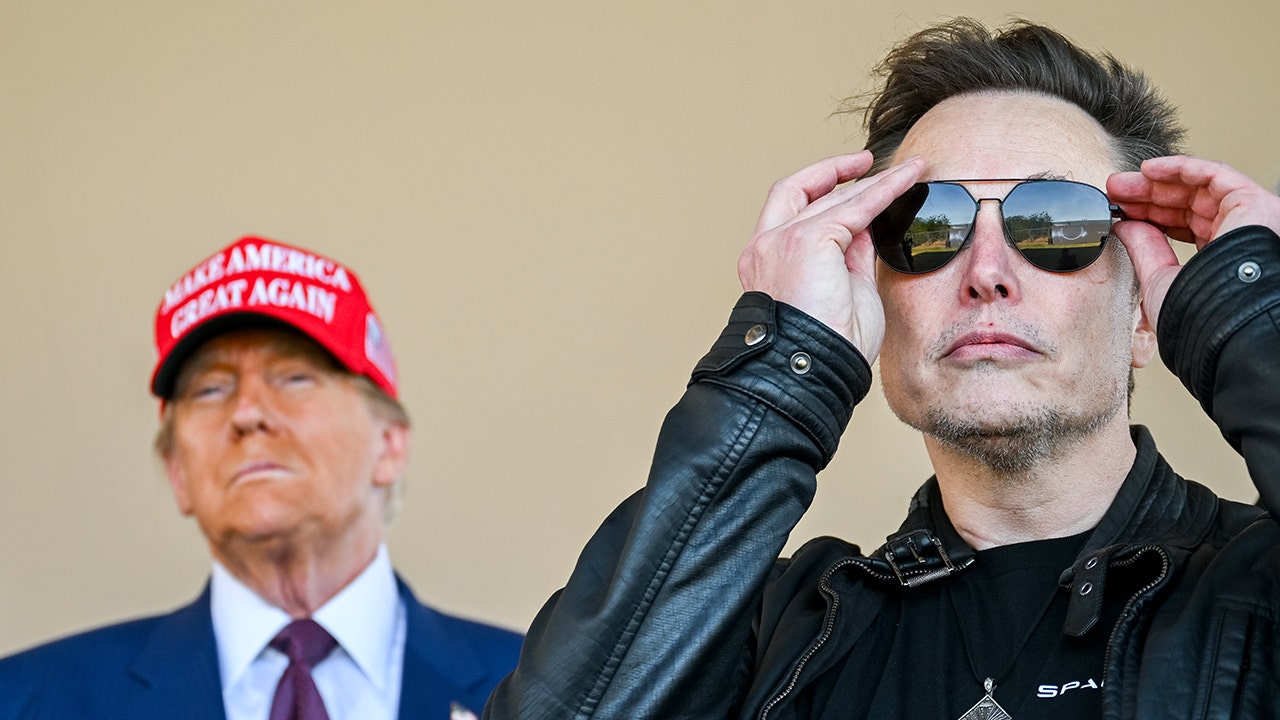Sports
Novak Djokovic’s results against Jannik Sinner and Carlos Alcaraz – a small part of a big problem

Almost two decades after the last time it happened, Novak Djokovic finds himself occupying a space in men’s tennis with which he is all too familiar. He is, by a distance, the third-best player in the world.
In the summer of 2007, soon after he turned 20, Djokovic made the semifinals of the French Open and Wimbledon, before reaching the final at the U.S. Open. He was No. 3 in the world for all of that July, dropped to No. 4 for a week in the August, and then stayed at No. 3 until… May. Of 2009.
In his way were Rafael Nadal, who beat him in those French Open and Wimbledon semis, and Roger Federer, who saw him off in straight sets in New York. With the exception of his 2008 Australian Open title, losses to Nadal and Federer defined Djokovic’s career from that summer until 2011. Both defeated him a couple more times each in the closing stages of majors between 2008 and 2010, with Djokovic posting two wins of his own against them at those events.
Now, as the 2024 season draws to a close, Djokovic has Jannik Sinner and Carlos Alcaraz in front of him.
On Sunday, Sinner beat Djokovic in straight sets in the final of the Shanghai Masters — a tournament Djokovic has won four times, more than any other player, and where he has a 39-6 record. Sinner has now beaten him twice this year, three times in a row, and in four of their past five ATP meetings; in that time, Djokovic has also lost consecutive Wimbledon finals to Alcaraz. It makes Sinner only the sixth player to win three ATP-level matches in a row against Djokovic, according to Opta:
| Player | Season |
|---|---|
|
Roger Federer |
2006-07, 2010 |
|
Rafael Nadal |
2007-09, 2012-13 |
|
Jo-Wilfried Tsonga |
2008 |
|
Andy Murray |
2008-09 |
|
Andy Roddick |
2009 |
|
Jannik Sinner |
2024 |
Djokovic did beat Alcaraz 7-6(3), 7-6(2) to win Olympic gold in August, but in his five matches against the top two this year, he has won just three sets. Two of those were in that Olympic final, the other came in his otherwise straightforward four-set loss to Sinner at the Australian Open.
Sinner and Alcaraz have also shared this year’s four Grand Slams between them, leaving him without a major in a calendar year for only the second time since 2010.
Djokovic reiterated on Sunday that Grand Slam titles are what motivate him to keep going at age 37, having won everything there is to win in the game. “Right now, it’s really about Slams and about still seeing how far I can push the bar for myself,” he said in a news conference.
The Serbian needs one more major to move clear of Margaret Court’s record of 24 — nine of which she won before tennis turned professional — which he equalled by winning the U.S. Open last year. For the rest of 2024, and into 2025, he will have to balance maintaining his level and fitness for those four majors with the knowledge that, without ranking points accrued in other events, his meetings with Sinner and Alcaraz at those majors will happen in earlier and earlier rounds.
Djokovic and Alcaraz have played two definitive Wimbledon finals in two years (Charlotte Wilson / Offside via Getty Images)
Djokovic’s semifinal loss to Sinner was his first defeat at the Australian Open — where he is a 10-time champion — in six years. For only the second time in his Grand Slam career, Djokovic failed to earn a break point and his 17.2 percent of points won on first-serve return was his third-worst tally of 2024.
In Shanghai on Sunday, perhaps the finest returner in the history of the sport had similar struggles, this time winning just 34.6 per cent of second-serve return points — again his third-worst showing of 2024. And while most opponents yield to Djokovic’s greater solidity in the crucial moments, Sinner did not. It was Djokovic, not Sinner, who coughed up a decisive error in the crucial first-set tiebreak.
Against Alcaraz at Wimbledon, an admittedly not-fully-fit Djokovic again returned poorly. He won 16.1 percent of first-serve return points, his second-lowest total of the year, and said after the match that he had never seen the young Spaniard serve so well.
Djokovic also had a dreadful day serving. He won 40 percent of points behind his second serve, his second-lowest figure of 2024 and way down on his average for the year of 55.9 percent. The 6-2, 6-2, 7-6 (4) scoreline that day arguably flattered the beaten finalist, with Alcaraz obliterating Djokovic’s serve at 4-4 in the third set after largely coasting through the four previous service games played. To beat Alcaraz in the Olympic final, Djokovic played his best match of the year in the tournament that mattered most to him, raising his level in the two tiebreaks, especially the second. Alcaraz, who converted zero of eight break points in the match, dipped in both tiebreaks and on those break points.

GO DEEPER
Tennis usually passes the torch. Carlos Alcaraz is running away with it
A problem for Djokovic is that Sinner and Alcaraz are performing at such a level that there is little he can do in the way of preparing for them with match practice that doesn’t involve playing meaningful matches against them. His relatively sparse schedule has allowed him to maintain his fitness while reliably easing into majors through the first week, getting himself match-ready by winning in the early rounds. He did it at this year’s French Open, falling only to the medial meniscus tear from which he recovered to reach the Wimbledon final. He did it at the U.S. Open, too, before meeting an inspired Alexei Popyrin and failing to lift his level to meet that challenge.
Djokovic has played 12 tournaments this year, compared to 14 for Sinner and 16 for Alcaraz (counting last month’s Davis Cup qualifiers as one event rather than two separate ties). Djokovic will probably end the year with 14 events, the same as in 2023 and two more than a year earlier when he missed the Australian swing because of his Covid-19 vaccination status. Djokovic played 13 events the year before that.
This very consistent approach has generally led to consistently brilliant results, but it’s his world ranking and his points accrued from consistently winning titles that have allowed him to do this without risking facing the best players before the final stages of events.

Sinner’s defeat of Djokovic in Melbourne proved a seminal moment in 2024 (Daniel Pockett / Getty Images)
That may be about to change.
Djokovic has accrued 3,910 ranking points so far in 2024, winning just one event and zero ATP titles — his lowest tally since 2005. That puts him at No. 6 in the ‘Race to Turin,’ the Italian city where the season-ending Tour Finals are held. He is currently No. 4 in the ATP world rankings, behind Alexander Zverev, who is ahead of Djokovic in points but not on-court quality. Djokovic is defending 1,000 of those points at the Paris Masters, which starts October 28, where he is the reigning champion. He is not expected to play any further events in 2024.
His results have also declined. He has won 80 percent of his matches in 2024 (37-9), down from 89 percent (56-7) last year. It is his lowest win percentage for a calendar year since 2010, in which he won 77 percent of matches — the final season before Djokovic donned his superhero cape and went stratospheric. His 2011, in which he won a staggering 92 percent (70-6) of matches, was one of the best years for an individual in men’s tennis history.
It feels unlikely that, at 37, Djokovic will want to tweak his volume of tournaments to try to be more match-tight for the majors, but without ranking points, his ranking will drop. If his ranking drops, his seeding for Grand Slams and Masters 1000 tournaments will drop. If his seedings for Grand Slams and Masters 1000 tournaments drop, he will be meeting Alcaraz or Sinner earlier and earlier in the events he most wants to win.
Even a seeding of five to eight at the Australian Open would currently mean a possible quarterfinal against one or the other, and he’d only have to drop one place from his current ranking of fourth to be facing that scenario.
Djokovic was phlegmatic about this latest defeat to Sinner at the weekend, saying: “As long as I perform the way I performed this week, and I think I can go toe-to-toe with the big guys. As long as that’s the case, I guess I’ll still feel the need to keep on competing, and motivation to be out there, and let’s see how long that’s going to last for.”
While the chance to reel in Sinner and Alcaraz — who were aged five and four respectively when Djokovic first became the world No. 3 — should be plenty of motivation, if losses to them become chronic, that would quickly become dispiriting. Much has been made over the past week of the retirement of Rafael Nadal and what that means for Djokovic as the last one of the sport’s Big Three standing, with Federer having hung up his racket in 2022.
After hearing the Nadal news, Djokovic said in an on-court interview in Shanghai, “I still enjoy competing, but part of me left with them, a big part of me.”

Djokovic will defend 1,000 ranking points when the Paris Masters begins in late October (Zhang Lintao / Getty Images)
It’s actually the third member of the group whose experience might be more pertinent.
Between Wimbledon in 2012 and the Australian Open in 2017, Federer didn’t win a Grand Slam title. For much of that period, he found himself in a similar position to where Djokovic is now — the world’s third-best player but with a pair of rivals a level above. One of those rivals was Djokovic, who beat Federer in three Grand Slam finals between Wimbledon in 2014 and the U.S. Open the following year. Nadal, meanwhile, beat him in the 2014 Australian Open semifinal. Andy Murray and Stan Wawrinka were other complicating factors during these years.
Federer, who was in Shanghai for Sunday’s final, could offer Djokovic some advice on hanging in when younger rivals emerge — especially as he had to deal with the Big One becoming the Big Two and then the Big Three in the mid-to-late 2000s.
There have been no indications that Djokovic is yet thinking about the end.
“I don’t know what the future brings, I’ll just try to go with the flow to see how I feel in a given moment,” he said on Sunday. “I still plan to compete and play next season and, yeah, let’s see how far I go.”
Djokovic dismantled one duopoly to kickstart his career.
As he approaches his final act, he will have to repeat the trick to prolong it.
(Top photo: Clive Brunskill / Getty Images)

Sports
Coco Gauff beats Iga Swiatek to help USA win United Cup title over Poland in Australia

Coco Gauff moved her head-to-head with Iga Swiatek one small step in the right direction with a 6-4, 6-4 win of at times outrageous quality in Sydney. Gauff’s victory gave Team USA a 1-0 lead in the United Cup final, before Taylor Fritz edged past Hubert Hurkacz 6-4, 5-7, 7-6(4) to clinch the title.
Swiatek now leads Gauff 11-3, but the American has won their last two meetings as she reworks the forehand and serve that hampered her for much of the 2024 season. Gauff, who added grip expert Matt Daly to her coaching team after splitting with Brad Gilbert, whipped Swiatek’s notoriously heavy forehand onto the lines time and again throughout, varying height and spin to keep the world No. 2 from establishing the baseline rhythm that so often sees her dominate players.
As at the WTA Tour Finals in Riyadh, Saudi Arabia, Swiatek made more forehand unforced errors than Gauff — but her groundstroke performance in Riyadh was completely errant, while this was a much closer contest that the Pole led on multiple occasions.
Swiatek looked hampered by an issue with her left thigh in the last two games, a separate issue to the right-thigh injury that she has carried since beating Britain’s Katie Boulter. After a titanic eighth game of the second set in which Gauff broke for 4-4, it made for a disappointingly flat end to what had been an incredible encounter. Gauff will exit with renewed confidence in their thus-far slanted rivalry, while Swiatek will look at being a break up in both sets as both an opportunity missed and encouragement for the rest of the 2025 season.
“I have the belief now that I am one of the best players in the world,” Gauff said on the court.
Hurkacz earned a 2-0 lead at the start of the third-set tiebreak against Fritz, who reached his maiden Grand Slam final at last year’s U.S. Open and reached a career-high ranking of No. 4 in the world. But the Pole tightened when on the front foot in two baseline exchanges, moving forward at the wrong time and letting Fritz move out in front.
It is Team USA’s second United Cup title, after winning the inaugural 2022 edition against Italy. Poland has now reached the final twice, losing on both occasions.
(Top photo: Brendon Thorne / Getty Images)
Sports
Bears' game-winning field goal drops Packers in NFC playoff seeding, snaps 10-game losing streak
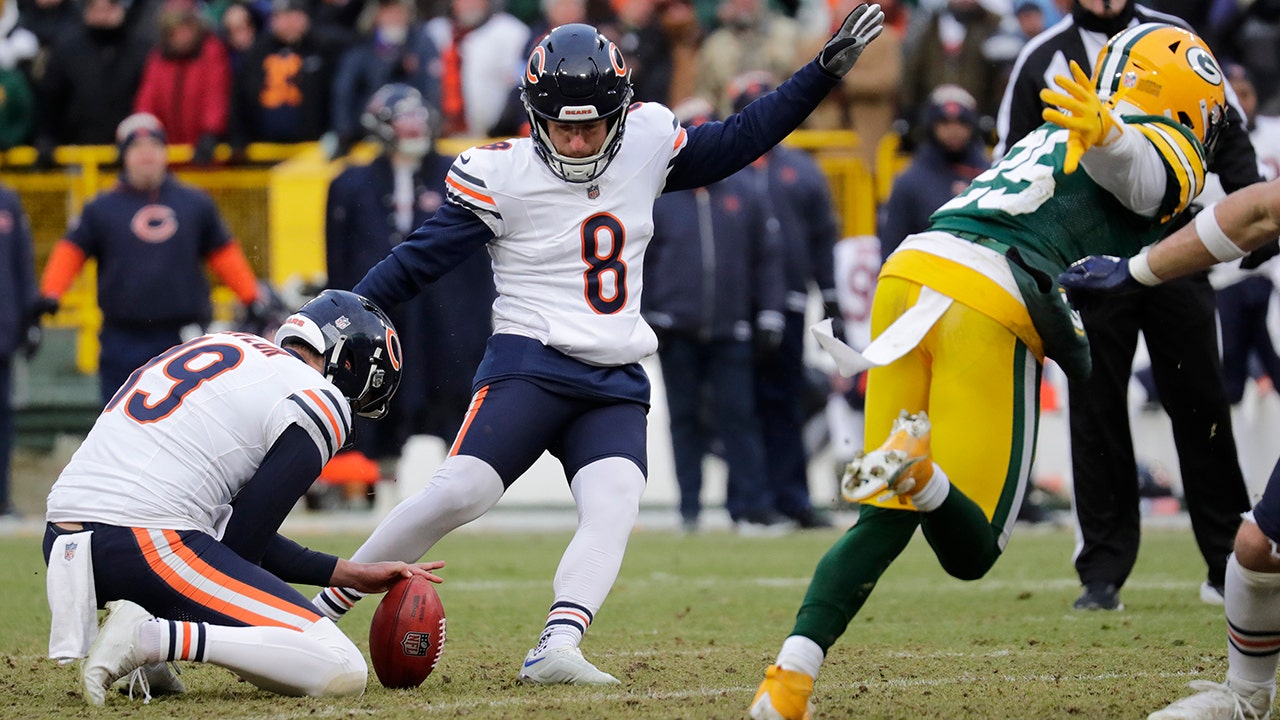
The Chicago Bears weren’t necessarily playing spoiler on Sunday when they took on the Green Bay Packers, but there was still a ton to play for as they wanted to finish the season on a high note.
That’s exactly what happened thanks to Cairo Santos drilling a 51-yard field goal to beat the Packers, 24-22, snapping Chicago’s 10-game losing streak to end the season with a 5-12 record.
It was also a historic kick made by Santos as the Bears finally defeated their NFC North foe, snapping an 11-game losing streak to the Packers.
Chicago Bears kicker Cairo Santos (8) celebrates his 51-yard game-winning field goal against the Packers, Jan. 5, 2025, at Lambeau Field in Green Bay. (Dan Powers USA TODAY NETWORK-Wisconsin)
The game-winning drive came after the Packers’ Brandon McManus drilled a 55-yard field goal to put Green Bay up 22-21 with 54 seconds left to play in the game.
Caleb Williams and the Bears’ offense knew they had one timeout remaining and needed the right yardage to get in range for Santos to walk it off. The drive didn’t start off well as Williams was sacked, but a costly penalty changed everything.
A horse collar tackle was called, leading to a 15-yard swing that put Chicago on the 35-yard line instead of back on their own 13. The very next play saw Williams connect with fellow rookie Rome Odunze to put the Bears at midfield with 40 seconds to play.
BEARS SHOCK PACKERS WITH PUNT RETURN TRICKERY FOR TOUCHDOWN
Then on 3rd-and-6 from Green Bay’s 46-yard line, Williams found D.J. Moore for 12 yards, but an illegal shift was called to negate the gain that would’ve given the Bears enough yards for Santos.
So on 3rd-and-11 with 15 seconds left and no timeouts remaining, Williams dropped back and found Moore in the middle of the field for an 18-yard pickup. Chicago rushed to the line of scrimmage and spiked the ball with two seconds left, giving Santos the chance to win it.

Chicago Bears quarterback Caleb Williams throws a pass during the fourth quarter against the Green Bay Packers at Lambeau Field. (Jeff Hanisch-Imagn Images)
The kick was hit with enough distance and the right trajectory, and the celebrating ensued at Lambeau Field.
And while the Packers were already in the playoffs, the loss, coupled with the Washington Commanders’ own game-winning drive, dropped Green Bay to the No. 7 seed in the NFC. They have to go to Philadelphia to face the No. 2 Eagles instead of going to Los Angeles to face the No. 3 Rams.
In the box score, Williams was 21-for-29 for 148 yards with a touchdown pass to Moore, who had nine catches for 86 yards. D’Andre Swift also found the end zone on one of his 20 rushes for 65 yards.
Chicago also had one of the league’s best trick plays of the season as Josh Blackwell ran back a 94-yard punt for the game’s first touchdown after going virtually untouched with the Packers thinking a second Bears punt returner was going to catch it.

Chicago Bears kicker Cairo Santos kicks a 51-yard game-winning field goal against the Green Bay Packers, Jan. 5, 2025 at Lambeau Field. (Dan Powers USA TODAY NETWORK-Wisconsin)
For the Packers, Jordan Love initially started this game but was taken out as a precaution with what was called an elbow injury. Malik Willis took over and went 10-of-13 for 136 yards. Josh Jacobs found the end zone for Green Bay again this season as well.
Follow Fox News Digital’s sports coverage on X, and subscribe to the Fox News Sports Huddle newsletter.
Sports
UCLA needs to go big as it goes home: Takeaways from the Bruins' loss to Nebraska
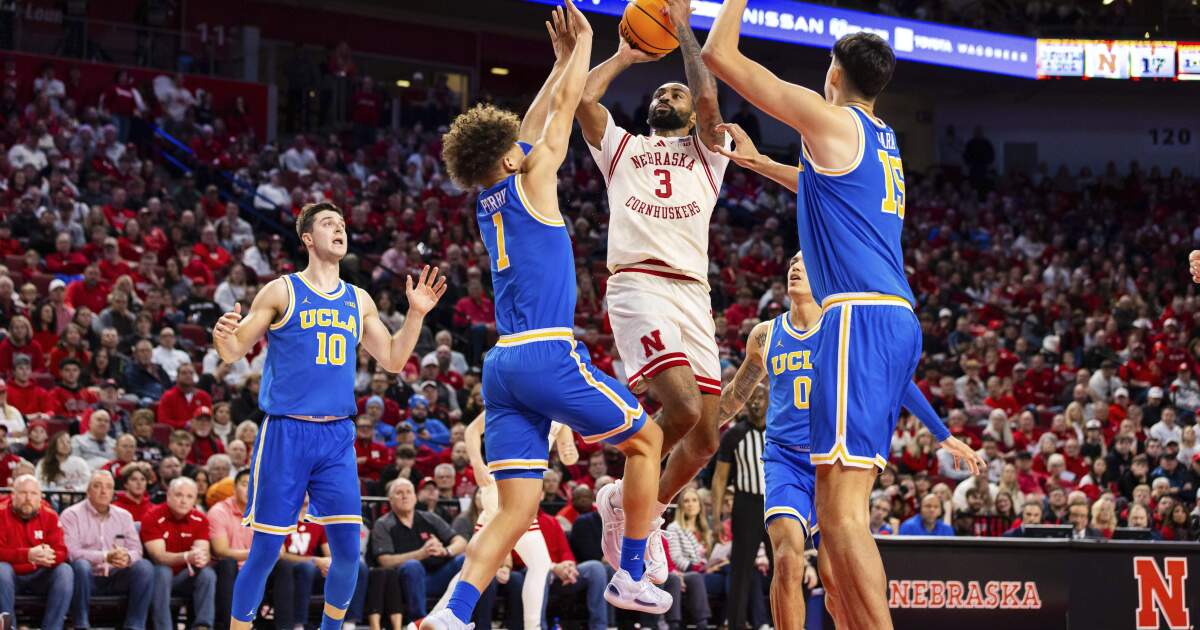
UCLA has an answer for one of its biggest problems taking up more space than anyone else on the bench.
He stands 7 feet 3, wears size-18 shoes and has a wingspan rivaling that of some regional jets.
His name is Aday Mara, and he’s probably going to have to play significantly more minutes for the Bruins to get where they want to go these next two months, let alone March.
During his 11 minutes against Nebraska on Saturday, the sophomore center made both of his shots, blocked two shots, snagged a steal and threw a perfect pass to Tyler Bilodeau for a dunk. Not shown in the box score were the shots that Mara altered or prevented from being taken, not to mention his supersized screens and the improved spacing for the offense whenever he was in the game.
Mara played nearly all of the game’s final eight and a half minutes. It was no coincidence that during that stretch the No. 15 Bruins nearly wiped out a 12-point deficit before falling to the Cornhuskers, 66-58, at Pinnacle Bank Arena.
UCLA coach Mick Cronin, who has acknowledged needing to play Mara more for at least a month, said the big man’s minutes were limited Saturday because of depth issues. Eric Dailey Jr. did not play because of an ongoing issue with a facial injury and William Kyle III was out after undergoing a recent undisclosed medical procedure.
Those absences left Mara and Bilodeau as the team’s only remaining big men. The Bruins were at their best when both were on the court together, a lineup that Cronin said he would like to have used more.
“It’s hard because you play them a lot together and they get tired at the same time, you’ve got nobody to put in,” Cronin said. “You’re playing Kobe [Johnson] at center, so Aday continues to improve. I’d love to play him a lot more and it’s coming.”
It can’t come soon enough given Mara’s potential to transform his team’s trajectory. Here are five takeaways from UCLA’s first loss in Big Ten play:
More Mara, please
Playing Mara additional minutes might not be optional in the Bruins’ next game.
Michigan features a pair of 7-foot starters in Danny Wolf and Vladislav Goldin, who will require UCLA to counter with size or risk getting mauled in the frontcourt.
Cronin has said he was hopeful that Dailey and Kyle could return for the game against the Wolverines, giving him the option to play Mara far more than his season average of 9.8 minutes per game. Their return will also allow Cronin to optimize his lineups.
Playing Mara alongside Bilodeau has the added benefit of allowing the latter to spend more time at his natural position, preventing the 6-foot-9 forward from wearing down because he has to exert so much energy defending bigger counterparts.
“I like playing with Aday,” Bilodeau said. “He’s a great passer, great inside, really long and can help a lot on defense around the rim, so it’s awesome.”
Who’s the point?
Dylan Andrews’ extended slump has left Cronin with another big decision.
Does he continue to let Andrews try to play his way back into form or let his point guard come off the bench to give another playmaker a larger role?
Skyy Clark has done a better job of running the offense in recent weeks but suffered several shots to the shoulder during the game against the Cornhuskers. If Clark is available against the Wolverines, he could be the primary point guard while Andrews plays fewer minutes as a defensive specialist who takes only a handful of shots while trying to rebuild his confidence.
Over his last three games, Andrews has more turnovers than assists while averaging 1.3 points.
“Dylan Andrews,” Cronin said, “got to play way better.”
Line them up
Moving Andrews to the bench would give Cronin some interesting options for his starting lineup, assuming everyone was available.
One idea would be to go with Clark, Johnson, Dailey, Bilodeau and Mara. That lineup leaves plenty of quality replacements while providing Cronin with the flexibility to play Bilodeau some at the five spot so that Mara and Kyle don’t need to combine for 40 minutes.

After assessing which lineups are working best, Cronin could go with a mix of reserves and starters to close games. The Bruins’ depth has kept every player reasonably fresh, no one averaging more than Bilodeau’s 27.3 minutes per game.
Boosters needed
Reserves Dominick Harris and Trent Perry couldn’t provide a needed boost to their shorthanded team Saturday, combining to go scoreless with three turnovers.
They can only hope their coach’s trust in them continues when the Bruins get back to full strength.
His five quality minutes against Gonzaga notwithstanding, Perry has struggled since the start of December. He’s looked rattled in spot minutes against quality teams while also routinely getting beaten on defense, though it’s important to remember he’s just a freshman going through all this for the first time.
Harris is a redshirt senior who has not been able to find any sort of rhythm. After ranking No. 3 in the nation last season by making 44.8% of his three-pointers at Loyola Marymount, Harris has made just two of 18 shots (11.1%) from long range in his first season with the Bruins.
Home cooking?
Many UCLA fans received a robocall from Cronin last week, imploring them to come to the Michigan game at Pauley Pavilion to support the team.
The Bruins need the attendance boost given they are averaging just 4,830 fans for home games. Only USC, averaging 4,163, has had smaller home crowds among Big Ten teams.
If UCLA wants to contend for a conference title during its first Big Ten season, it’s going to need to win nearly every home game after learning just how hard it is to win on the road.
-

 Health1 week ago
Health1 week agoNew Year life lessons from country star: 'Never forget where you came from'
-
/cdn.vox-cdn.com/uploads/chorus_asset/file/24982514/Quest_3_dock.jpg)
/cdn.vox-cdn.com/uploads/chorus_asset/file/24982514/Quest_3_dock.jpg) Technology1 week ago
Technology1 week agoMeta’s ‘software update issue’ has been breaking Quest headsets for weeks
-

 Business5 days ago
Business5 days agoThese are the top 7 issues facing the struggling restaurant industry in 2025
-

 Politics1 week ago
Politics1 week ago'Politics is bad for business.' Why Disney's Bob Iger is trying to avoid hot buttons
-

 Culture5 days ago
Culture5 days agoThe 25 worst losses in college football history, including Baylor’s 2024 entry at Colorado
-

 Sports4 days ago
Sports4 days agoThe top out-of-contract players available as free transfers: Kimmich, De Bruyne, Van Dijk…
-

 Politics3 days ago
Politics3 days agoNew Orleans attacker had 'remote detonator' for explosives in French Quarter, Biden says
-

 Politics3 days ago
Politics3 days agoCarter's judicial picks reshaped the federal bench across the country





